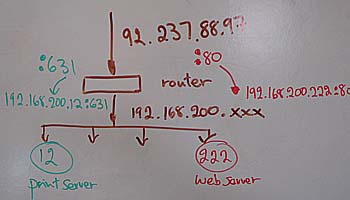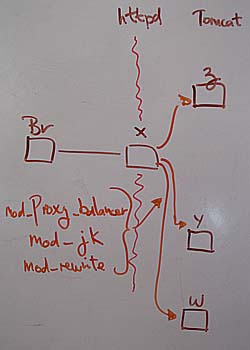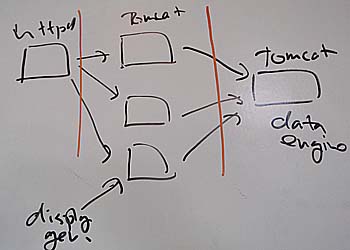
|
Training, Open Source Programming Languages |
| Home | Accessibility | Courses | The Mouth | Resources | Site Map | About Us | Contact |
| For 2023 (and 2024 ...) - we are now fully retired from IT training. We have made many, many friends over 25 years of teaching about Python, Tcl, Perl, PHP, Lua, Java, C and C++ - and MySQL, Linux and Solaris/SunOS too. Our training notes are now very much out of date, but due to upward compatability most of our examples remain operational and even relevant ad you are welcome to make us if them "as seen" and at your own risk. Lisa and I (Graham) now live in what was our training centre in Melksham - happy to meet with former delegates here - but do check ahead before coming round. We are far from inactive - rather, enjoying the times that we are retired but still healthy enough in mind and body to be active! I am also active in many other area and still look after a lot of web sites - you can find an index ((here)) |
|
Routers, Firewalls and multilayer servers  We only have one IP address at Well House Manor, but lots of computers. How does that work? We only have one IP address at Well House Manor, but lots of computers. How does that work?Internally, all our machines are on 192.168.200.xxx network but the router re-writes those to our single IP address on output, and for traffic where the client is at our place (that's most traffic such as web browsers and FTP clients) it remembers who has opened which particular connection so that replies can be written back correctly. Accesses to any servers that we run locally are slightly more problematic; incoming traffic of a particular type can only be routed to one machine ... and indeed we have one machine set up as the default destination for all types of traffic / ports (this machine is known as a DMZ or demilitarised zone) and care needs to be taken of the security on it. Then we make exceptions - the diagram showing how all traffic on TCP port 80 (web service) is routed to our web server, and traffic for printing is routed to a printer.  By using a single instance of httpd, fronting a number of machines running Tomcat, you can have a single web server that's targeted for all traffic that then distributes it to other services. This distribution is done by httpd via mod_proxy_balancer, mod_rewrite or mod_jk (and there are some other historic ways too). By using a single instance of httpd, fronting a number of machines running Tomcat, you can have a single web server that's targeted for all traffic that then distributes it to other services. This distribution is done by httpd via mod_proxy_balancer, mod_rewrite or mod_jk (and there are some other historic ways too).As well as allowing traffic to be sent to a single machine, this approach also means that the main servers - running Tomcat - can be hidden behind a firewall and the high level of protection only need be applied to the httpd machine.  One of the issues of splitting traffic between a number of back end servers is that you have to make sure that sessions are continued properly - it's no good having a user start his work on machine "X" then get transferred to machine "Y" if machine "Y" isn't even aware of what he has done on "X". One of the issues of splitting traffic between a number of back end servers is that you have to make sure that sessions are continued properly - it's no good having a user start his work on machine "X" then get transferred to machine "Y" if machine "Y" isn't even aware of what he has done on "X".There are a number of solutions to this issue, including the inclusion of a cookie in the initial response to instruct the user's browser to ask for the same machine next time (we do this in real life - "I was talking to Mavis about it ... can you put me through to her again please"). This diagram shows another approach - how the parallel machines can all co-ordinate via another machine behind them - perhaps running a database such as MySQL, or perhaps even another instance of Tomcat. (written 2009-05-01, updated 2009-05-02) Associated topics are indexed as below, or enter http://melksh.am/nnnn for individual articles A052 - Web Application Deployment - Networking - General[768] Our new .eu top level domain - (2006-06-19) [2149] Routing Network Traffic - Proxies, Redirects and DNS - (2009-05-01) [2695] TCP v UDP / Client v Server - Python examples - (2010-03-25)
Some other Articles
Bean Classes in Java and Java Database ConnectionsClass Loading and Variable Conversion in Java My four feet! What is a JSP tag library? Routers, Firewalls and multilayer servers Variable scope in Java Servlets and other web applications A very easy JSP (Java Server Page) An evening excursion to Devizes and Avebury Using the internet to remotely check for power failure at home (PHP) |
4759 posts, page by page
Link to page ... 1, 2, 3, 4, 5, 6, 7, 8, 9, 10, 11, 12, 13, 14, 15, 16, 17, 18, 19, 20, 21, 22, 23, 24, 25, 26, 27, 28, 29, 30, 31, 32, 33, 34, 35, 36, 37, 38, 39, 40, 41, 42, 43, 44, 45, 46, 47, 48, 49, 50, 51, 52, 53, 54, 55, 56, 57, 58, 59, 60, 61, 62, 63, 64, 65, 66, 67, 68, 69, 70, 71, 72, 73, 74, 75, 76, 77, 78, 79, 80, 81, 82, 83, 84, 85, 86, 87, 88, 89, 90, 91, 92, 93, 94, 95, 96 at 50 posts per pageThis is a page archived from The Horse's Mouth at http://www.wellho.net/horse/ - the diary and writings of Graham Ellis. Every attempt was made to provide current information at the time the page was written, but things do move forward in our business - new software releases, price changes, new techniques. Please check back via our main site for current courses, prices, versions, etc - any mention of a price in "The Horse's Mouth" cannot be taken as an offer to supply at that price.
Link to Ezine home page (for reading).
Link to Blogging home page (to add comments).
PH: 01144 1225 708225 • EMAIL: info@wellho.net • WEB: http://www.wellho.net • SKYPE: wellho
PAGE: http://www.wellho.net/mouth/2150_.html • PAGE BUILT: Sun Oct 11 16:07:41 2020 • BUILD SYSTEM: JelliaJamb